


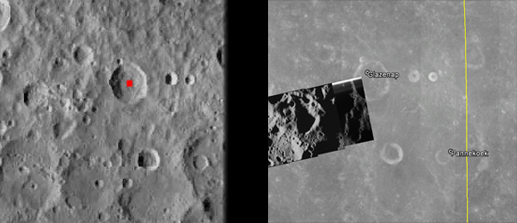
So there we have a photographic sequence commencing with some not quite completely dark photographs, just after the terminator line, so we have pretty good agreement that this is what should be visible. Compare that with some images from Magazine L taken 12 revolutions earlier on rev 14, which started at 20:11 on the 5th. The red line shows the terminator at that time, while the yelllow line is as above.
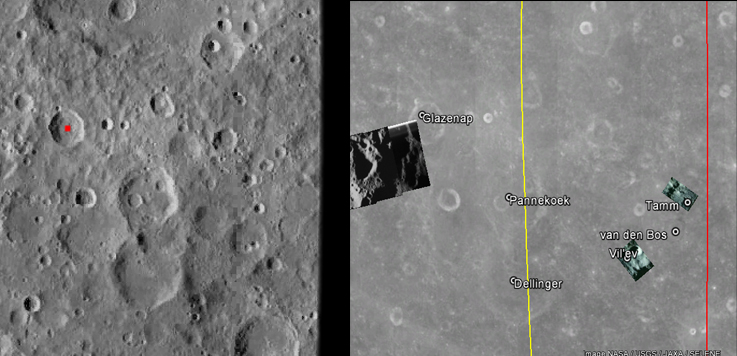
So an area that is dark now was light before in a way that exactly matches what should be seen. Again,
Meanwhile on the other side of the moon we have 4 images taken on Magazine S, However, the photographic index doesn’t record when these photographs were taken, but if we use the VMA we can derive an estimate of around 20:30 on the 5th.
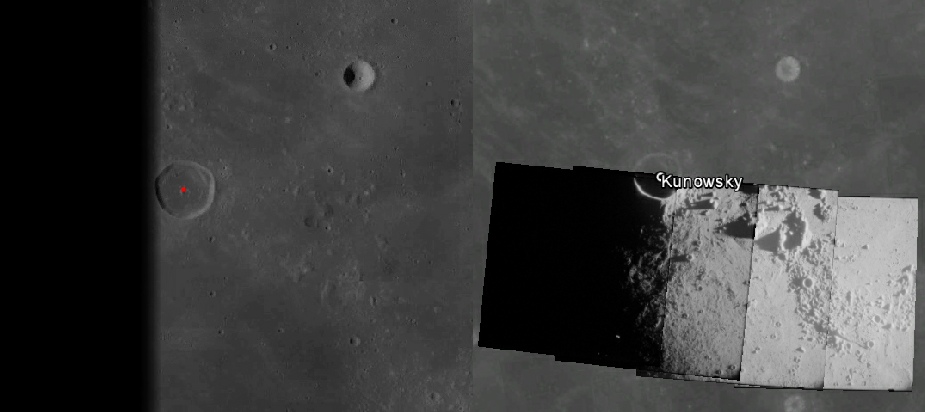
The mission transcript shows that the CSM would have been on the nearside at this time, as the CMP is in discussion with the ground. Much of that discussion concerns issues he is having with the camera and whether or not it is functioning. He refers specifically to magazine S, stating that he has reached frame 57, but these 4 images around the terminator are the first in the magazine and only 25 are recorded altogether.
It certainly can’t have been taken on the previous orbit as Kunowsky crater would have been on complete darkness. The following orbit (rev 22) would have seen i t much more illuminated than the photographs suggest, and the CMP was supposed to be on a rest period. It is, at any rate, consistent with the photographic record.
The only other images showing clear terminator divides are those taken after TEI. Magazine R provides several images of a receding moon, and AS14-
Apollo 14
Apollo 14 doesn’t give much to go on in terms of photographs taken in orbit, or indeed pictures of the lunar disk given that their landing location and mission timing meant that the moon was almost full.
One of the first images comes from photographs taken just as the crew are entering lunar orbit, AS14-
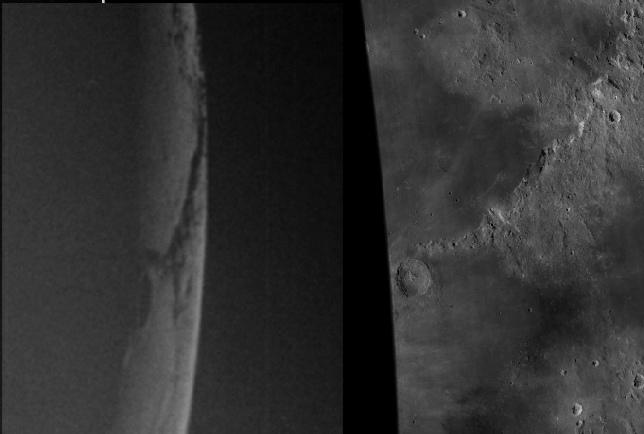
The close up of the Apollo picture (left) shows a view not possible from Earth, and also shows a view consistent with being taken at 04:30 on 05/02/71, as indicated by VMA on the right.
Onwards to orbit, and the best orbital views of the terminator are in magazine Q and magazine S.
The photographic index for the mission tells us that magazine Q was taken during Rev 26, which the mission transcript tells us started at 130:49 MET, or 07:52 GMT on 06/02/71. The image below shows the Google Moon with the start of magazine Q overlain on it compared with VMA’s prediction of the terminator at 08:00 on the 6th. The yellow line on Google Moon shows where the terminator would be on that date. The red marker identifies Glazenap crater.
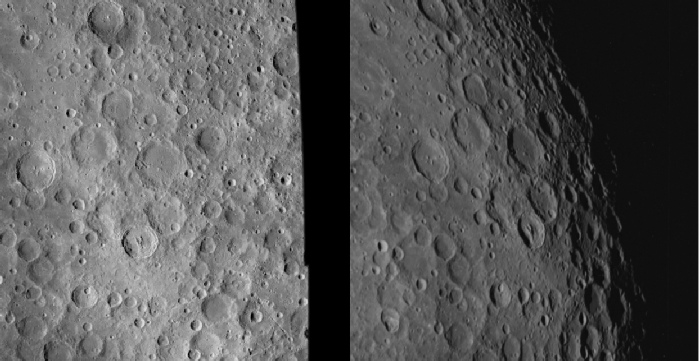
We also have this very dark image from Magazine showing Tsiolkovsky crater on the terminator,m which the VMA confirms would be the case at amount the time of TEI.
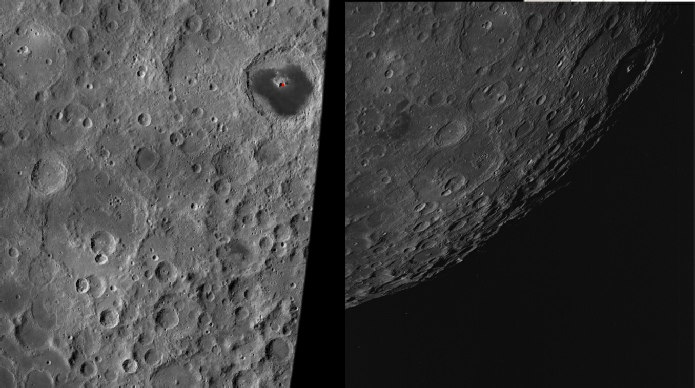
And there we must conclude Apollo 14 -
Apollo 15
Apollo 15 brings a new phase of terminator observations in that in addition to any ‘normal’ photographs from orbit it marks the start of a 3 mission programme of intense mapping using dedicated cameras. The metric mapping cameras (MMC) took images from terminator to terminator at regular intervals throughout Apollo 15, 16 and 17, and as the revolutions on which this occurred are well recorded we can be very precise about when they were done.
We can be even more precise given that the camera start and end times are recorded in the transcripts recorded here, and particularly on the AFJ starting here.
The first mapping orbit starts with rev 4 where the camera was started at 84:42:23 and ended at 84:54:14, or 02:16 on 30/07/71 and 02:28 -
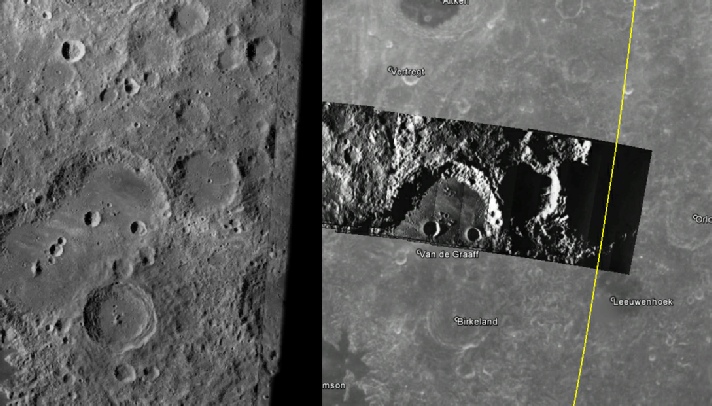
So far so good I’d say -
The next mapping rotation covering the terminators is rev 16 (rev 15 did some coverage in the middle of the sunlit part of the orbit). The mapping photography started at 106:56 and ended at 108:55, or 02:30 and 03:29 respectively on the 31st. In the figure below the red line represents the VMA terminator on rev 16, while the yellow is rev 4’s. I’ll alternate these lines as the mission progresses.
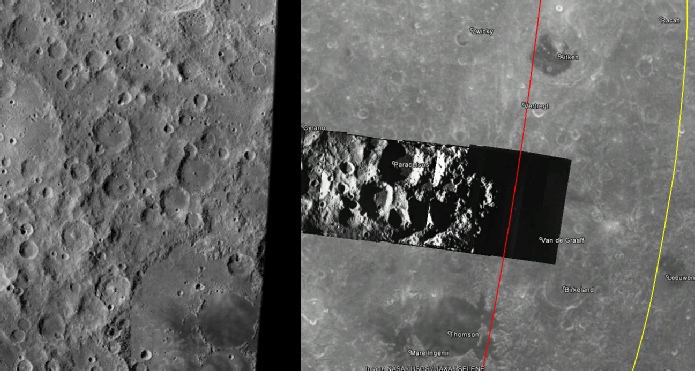
We have two things of note here. Firstly, the terminator line has moved, secondly it has moved to a position entirely consistent with the amount of time elapsed between the different mapping passes.
Meanwhile on the other side of the moon we have a different terminator.
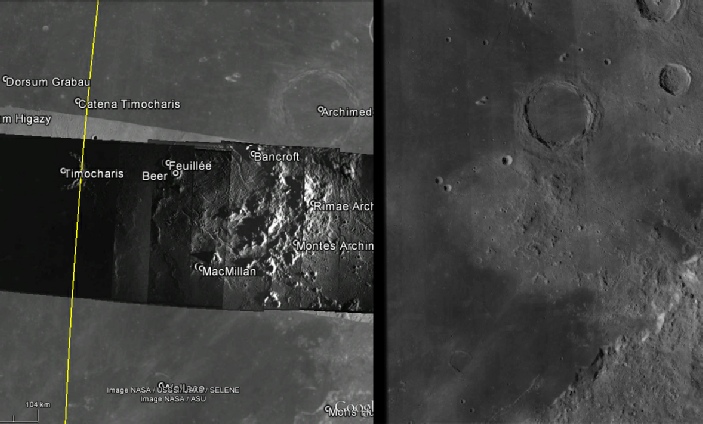
VMA suggests that the terminator falls across the eastern edge of Timocharis crater, which is not quite visible on the VMA screenshot. The sun is just catching the crater rim tops in the Apollo view. It should be remembered that the VMA line is a pretty solid one and isn’t always going to be as clear cut as that. It’s also worth noting that the relative lack of craters on this part of the lunar surface makes it more difficult to outline a precise line as it tends to be seen as a more gradual descent into darkness. Earthshine is also clouding the boundary line.
Next up is rev 22 which commenced photography at 119:34, or 13:08 on the 31st. The transcript gives a stop time of 121:33, but this must be an error as the next start time for the following orbit is 6 minutes later -
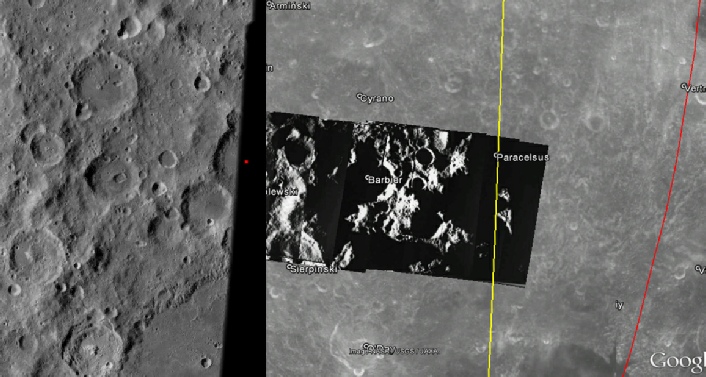
As before the red and yellow lines show the previous and current terminators respectively, and with the exception of glimmers of light on the higher crater rims below Paracelsus the lines are in agreement with what the VMA says should occur. An hour later over the western terminator we have the following.
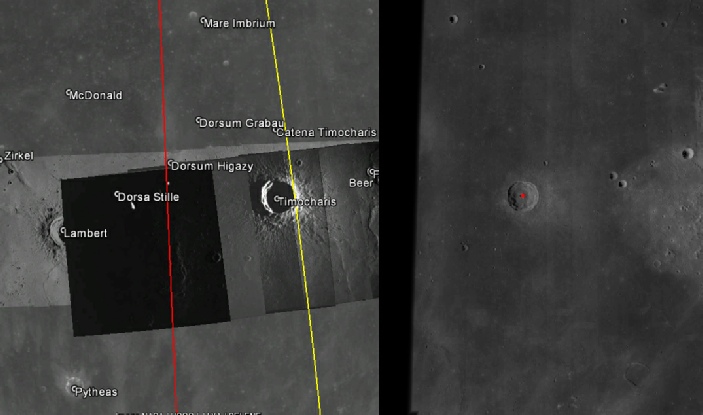
Just as the terminator is marching steadily westwards at the start of the photographic transect, it is doing the same at the end, and has now moved beyond Timocharis. The difference in angles of the various lines is more to do with the the view being rotated by my moving around it than actual rotational differences.
Back over at the eastern limb we’ve now had 3 orbits showing a vertical view, and there is sufficient overlap around Paracelsus to show how the scene has changed over time in this animation.
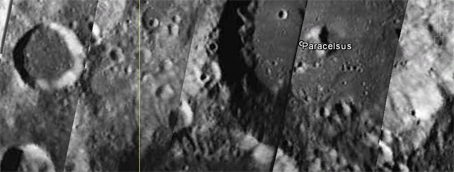
The next vertical mapping were done on rev 27, with photograph starting at 129:26 and ending at 130:26, or 23:00 on the 31st and midnight on the 1st.
The next mapping sequence was done on orbit 23. This is an oblique sequence and they can be strung together to show the progression from one terminator to another. It’s worth watchng out for Timocharis again as it reaches the end.

For once the terminator is a little behind where the MMC has started photographing, and the light on Sierpienski crater suggests that the photography session has just missed the true terminator line, rather than the time being incorrect.
Over on the other terminator, despite Earthshine and the lack of surface creatures we can see that the terminator is in the right place according the VMA predictions.
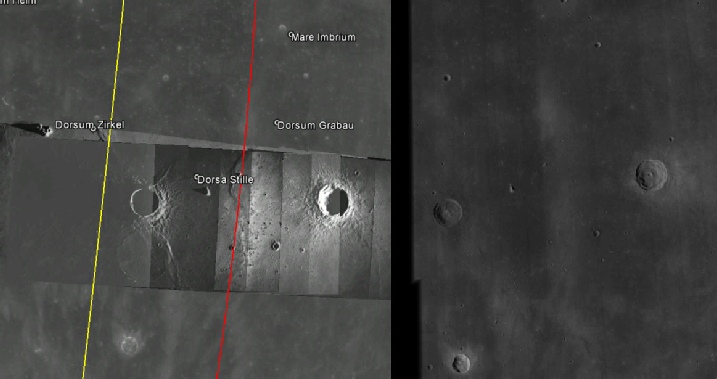
Next up is rev 33. There is again some confusion in the transcript about the length of the mapping operaton. The start point seems reasonable enough at 141:17 (10:51) or 9 minutes after the start of the orbit, but the quoted end time is 144:09 -
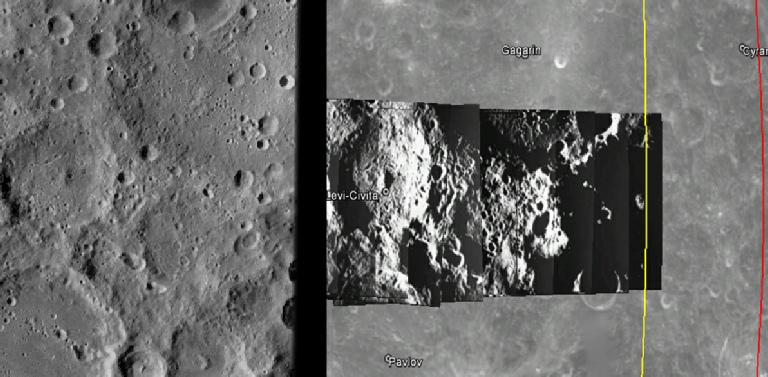
The start point certainly looks coincident with the eastern terminator, so how about the western one? Well, it compares like this.
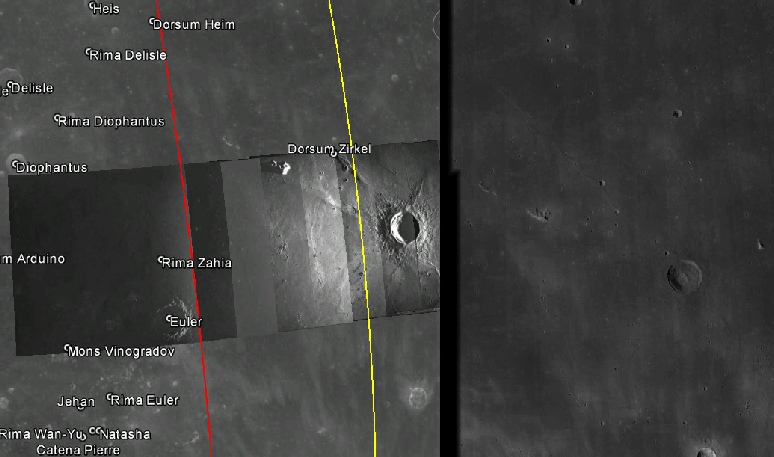
The VMA estimate of terminator does suggest the terminator falling east of Euler crater, whereas the Apollo images show that the crater is still partially lit. We are working on an estimated time for this terminator, but this is unlikely to make much difference to the line. We do know that the CSM lost signal at 142:45 (12:19), so our estimate isn’t unreasonable.
The next MMC orbit is rev 38, and while the start time for that orbit isn’t recorded the transcript shows that the start time was 151:09 ( 20:43 on the 1st) and an end time of an hour later at 152:09.
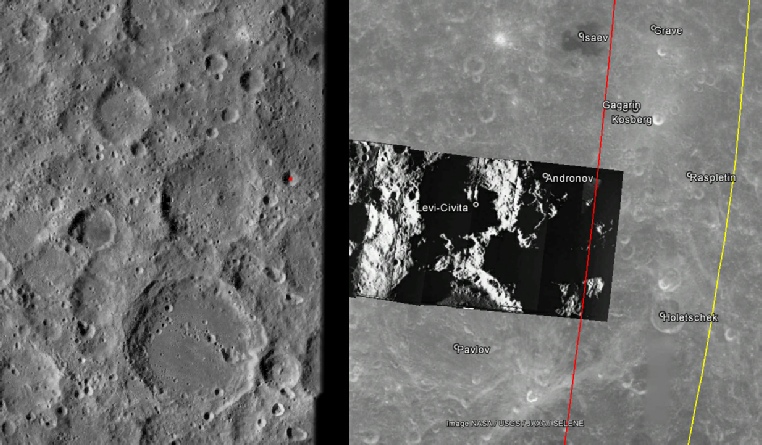
Another consistent progression westward for the terminator here. Over at the western limb an hour later we have this.
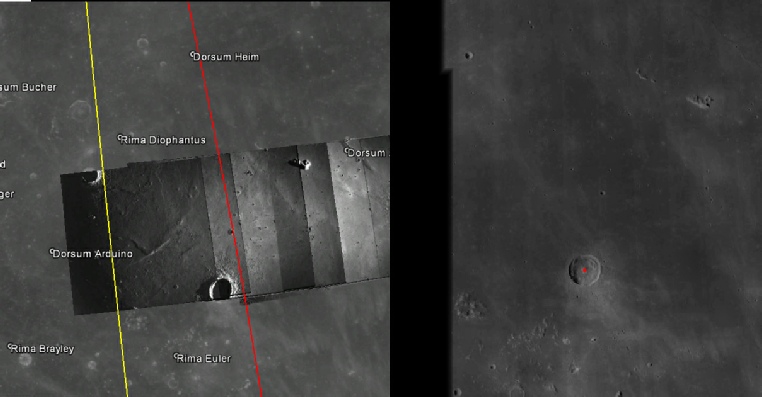
Again there is a slight discrepancy between where VMA says the terminator line should be and where the Apollo line is, as the highest points of Diophantus are sunlit The jagged line of the VMA terminator shows the main reason for this is the artificially solid line of used. As on Earth it doesn’t suddenly get dark, it darkens gradually with local variations dependent on terrain.
Six orbits later the MMC starts again on rev 44 at 162:59 (08:33 on the 2nd) ending an hour later.
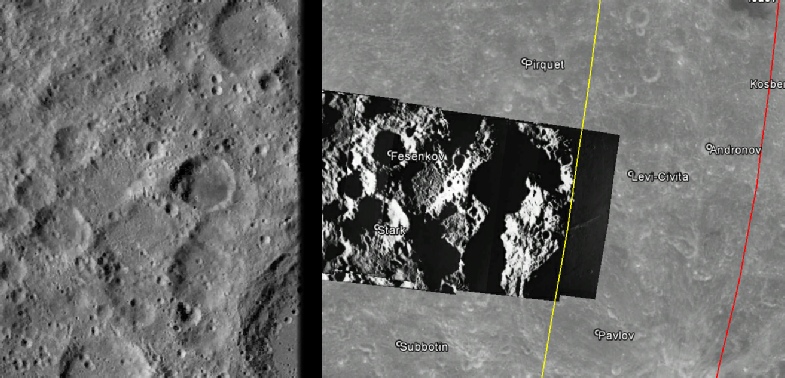
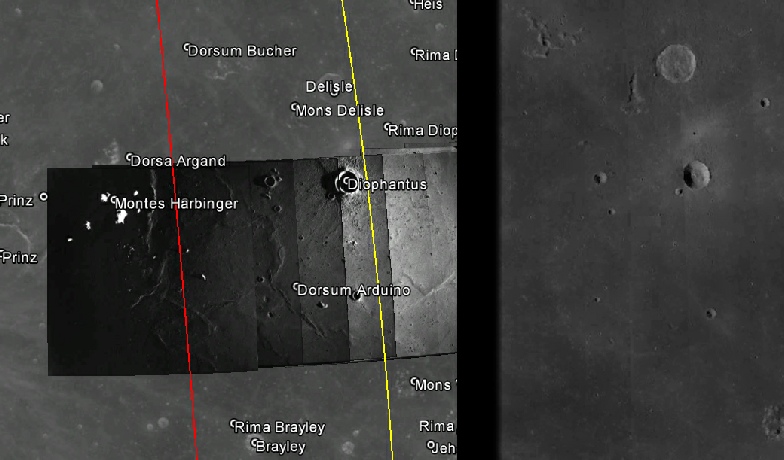
There are only so many ways you can say it: it matches what the VMA says should be there. Again.
Exactly the same can be said of the western terminator, where once again it gets dark exactly where it’s supposed to, and the only glints of sun are on the peaks of Montes Harbinger.
The next mapping pass is rev 50, but this doesn’t capture either terminator as it starts after the eastern one and finishes well short of the western one, so we are forced to head for rev 60 for our next terminator fix. The relatively long gap is accounted for by the return of the LM and discarding it after it had disgorged its crew and cargo.
This orbit saw the MMC opened at 194:35 and ended 59 minutes later at 195:34, or 16:09 on the 3rd and 17:08 respectively. There’s been considerable movement in the terminator location in the 16 revolutions since the last photographs of it, so there isn’t room this line for the previous indicator lines.
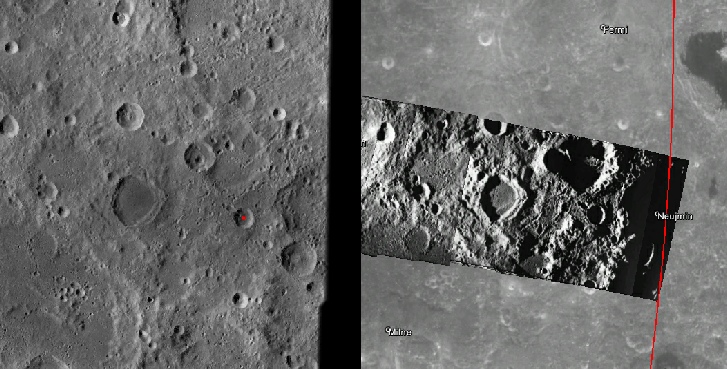
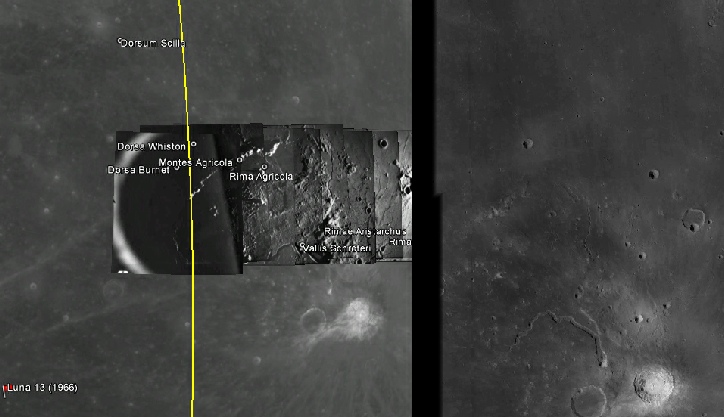
It’s getting repetitive now, but once again there is a match, as is the location of the western terminator on the other side an hour later.
After rev 60 we have two orbits in quick succession, neither of which capture an entire terminator to terminator sequence in a complex series of co-
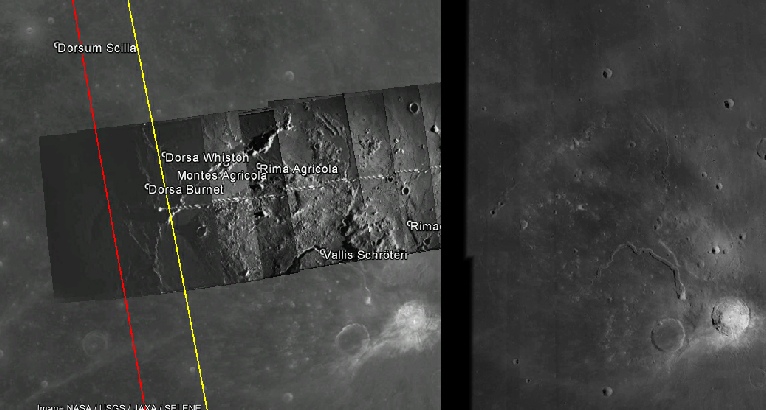
And once again we see the terminator moving along the appropriate distance and marking the appropriate line. It’s worth mentioning that the VMA line is jagged, which shows that although it is apparently vertical on the screenshot, in reality over the entire lunar disk it would be as slanted as the MMC one.
On the next orbit the MMC is opened again (at 200:25, or 21:59), this time only covering a small part of the start of the daylight area.
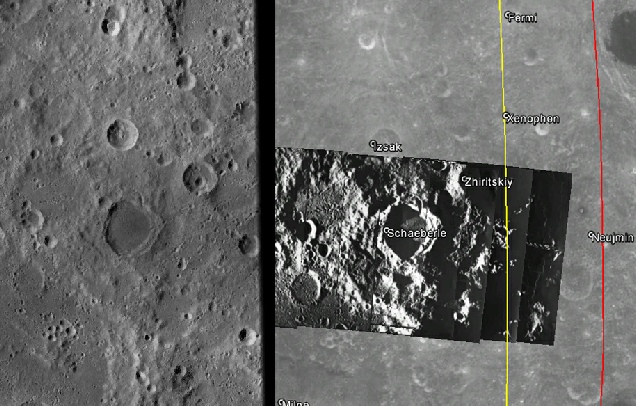
We now have another relatively long gap as we head nearer to TEI and the next mapping orbit is rev 70. The MMC was intially operated between 214:12 (11:45 04/08/71) and ending an hour later. Although several minor changes were made to the timings they would not have made a material difference to the terminator position in terms of this study.
The eastern terminator (red) is shown below with the previous line in yellow.
As usual the terminator line is in the right place.
While the MMC didn’t capture the western terminator on rev 63, the Hasselblads were in use, and AS15-
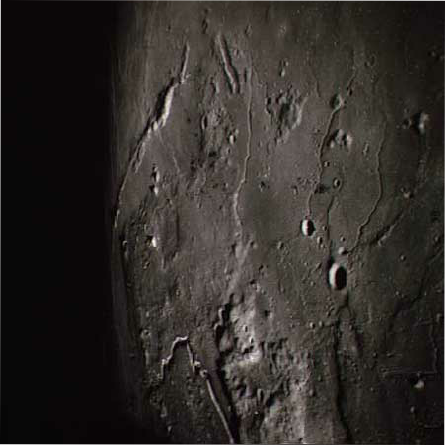
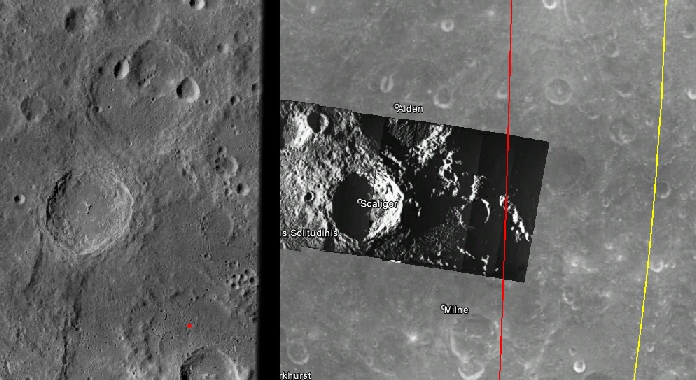
The line is again consistent, with the only lit part being the high rim of Schaeberle’s satellite craters. The western counterpart is below.
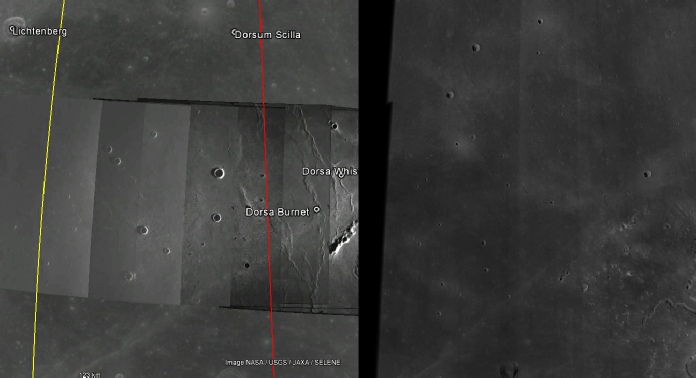
The lack of surface features makes it difficult, but it is once again in the right place. You check this by looking at AS15-
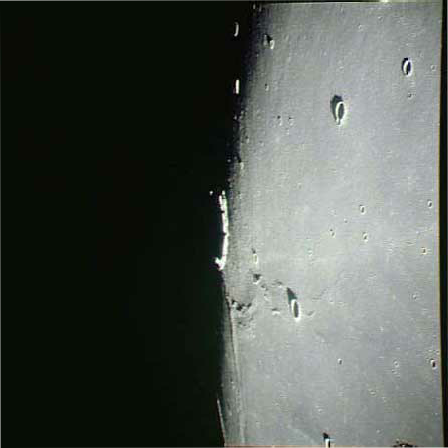
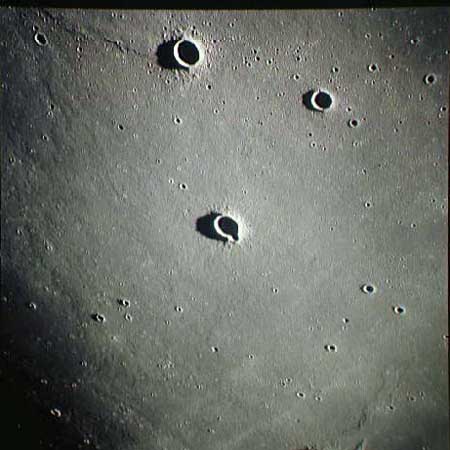
AS15-
We only have one more terminator view to look at, this time taken on rev 72 starting at 218:17, or 17:39 on the 4th and ending, as usual, an hour later.
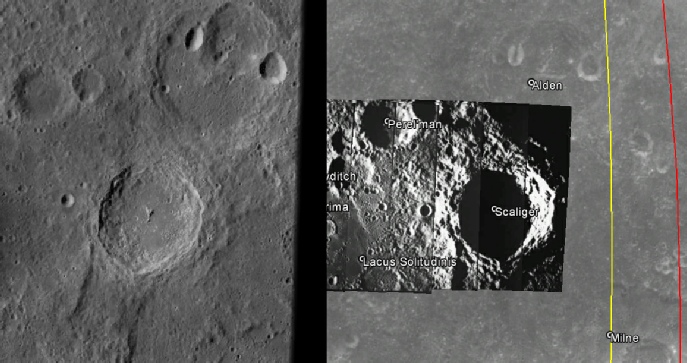
According to the VMA the terminator should be east of Scaliger, and this seems to be a very good match for what the MMC images show. Meanwhile over in the west we have this.
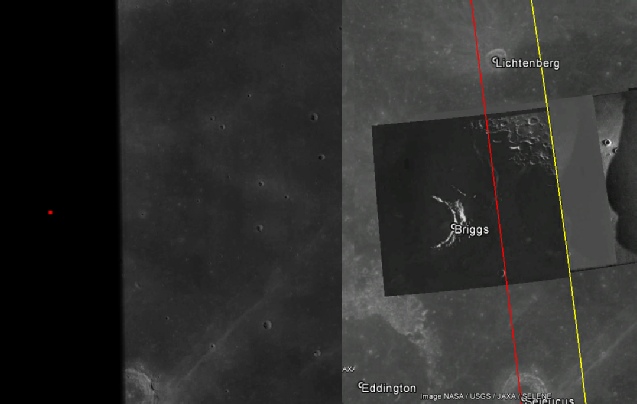
Briggs crater, whose eastern rim is just in sunlight, is marked by the red dot on the VMA and falls behind the ‘official’ terminator shown by the MMC, but the general area falling into darkness is consistent with what is predicted.
So there we have it -
Why? Because because people were in orbit around it operating the cameras.
